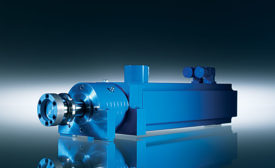Assembly Presses
Parts of various sizes, shapes and materials are often assembled with an interference fit.
Read More
Assembly Presses
Handheld Servo Press Tops Lineup of New Press Technologies at ASSEMBLY Show
May 17, 2017
Assembly Presses for High-Force Applications
Applications requiring more than 10 tons of force pose unique challenges for press suppliers.
May 5, 2017
advertisement
How To Determine the Right Servo-Controlled Press Technology for Your Application
April 27, 2017
advertisement
How To Put a High-Precision Press on Your Robot and Still Minimize Your Work Station’s Footprint
April 27, 2017
advertisement
How To Select the Right Electromechanical Servo Press for Your Assembly Operation
April 27, 2017
ASSEMBLY Capital Spending Report: Capital Spending to Increase
With automotive and aerospace manufacturing going strong, our annual Capital Equipment Spending Survey predicts continued growth in investment.
December 1, 2016
What’s New With Servo Presses
Needing more precision, energy efficiency and traceability data from their assembly presses, manufacturers are increasingly turning to servo-driven models.
September 8, 2016
Never miss the latest news and trends driving the manufacturing industry
Stay in the know on the latest assembly trends.
JOIN TODAY!Copyright ©2024. All Rights Reserved BNP Media.
Design, CMS, Hosting & Web Development :: ePublishing











